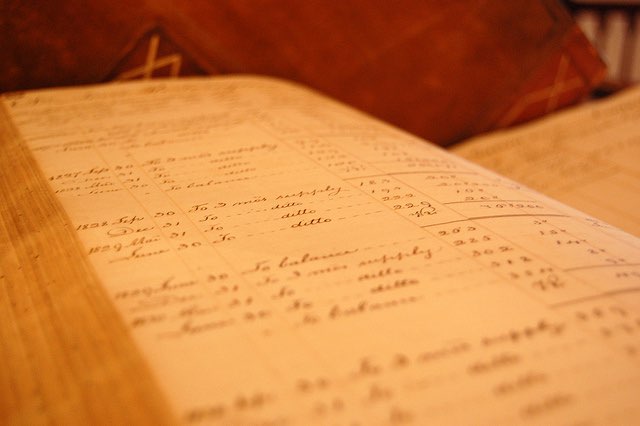Filings Shine Light on Weaknesses of Axanar Defense
Peters’ Attempts to Alter Financial Records, Improperly Use Abrams Testimony Criticized by Studios
Table of Contents
A new round of pre-trial filings on December 19, 2016, shed light on several emerging weaknesses of the defense case in Axanar‘s copyright infringement lawsuit brought by CBS and Paramount Pictures, including producer Alec Peters’ reliance on doctored financials and testimony from Star Trek directors J.J. Abrams and Justin Lin.
Both sides filed summaries of what they contend are the facts and the law supporting their cases, as well as a joint list of witnesses to be called and evidence to be admitted at trial, scheduled to begin January 31, 2017.
See also: Studios, Axanar Release Trial's Witness List
The new documents follow a number of pending motions filed in the previous couple of weeks asking federal Judge R. Gary Klausner to:
- Issue a summary judgment in the case based on either of separate motions by the two sides claiming the material facts in the case are not in dispute, giving the judge leave to rule just on the applicable law, making a jury trial unnecessary.
- Exclude allegedly irrelevant or unfounded evidence from the trial, including Axanar’s financial records, testimony from several witnesses and the defense call to preclude any mention of Star Trek whatsoever in a trial explicitly about Star Trek’s copyrights.
« Peters ‘reversed’ out certain [personal] expenses by attempting to offset them with the lease payments he was required to make on the studio he rented. » — Plaintiffs’ Joint Exhibit List
Axanar's Financials
Records showing how much money Peters raised from Star Trek fans to make the feature film, Axanar, and then subsequently spent without making the movie at all, have been a central matter of contention between the plaintiffs and defense.
CBS and Paramount’s attorneys alleged Peters himself financially benefitted from the funds, raised via crowdfunding platforms Kickstarter and Indiegogo, including $65,000 in salary and personal expenses such as health insurance, gasoline for himself and his former girlfriend Diana Kingsbury, tens of thousands in restaurant meals and travel expenses, tires for Peters’ Lexus and more.
Peters’ attorneys claimed that subsequent, more accurate records demonstrate those expenses were not paid out of donor money, and that how he spent the money is not relevant to whether Peters infringed on the studios’ Star Trek copyrights.

Altered Financials
The plaintiffs’ December 19 filing condemned Peters’ second set of financial statements as an after-the-fact attempt to make it seem Peters’ personal expenses, previously documented as paid with donor funds, had been paid by him:
In response to Plaintiffs’ document requests, Defendants produced a financial statement. Then, after Mr. Peters’ first deposition, he altered the financial statement. Peters “reversed” out certain expenses by attempting to offset them with the lease payments he was required to make on the studio he rented. Defendants’ post- lawsuit financial transactions relating to Axanar Productions, including their manipulation of the financial statement, are irrelevant because they do not eliminate the fact that prior to the filing of this lawsuit, Defendants profited from the business that they created. Also, this financial statement was created by Defendants during this litigation, has no probative weight and is prejudicial.1)
Peters’ attempt appeared to be the source of his claims that he had donated $150,000 of his own money to Axanar and that he had never paid himself anything from donor funds.
The defense’s response was only that Axanar’s actual expenditures were not relevant to whether Peters had infringed.
Direct Financial Benefit
However, the plaintiffs’ alleged that Peters had personally benefitted from the money raised to produce Axanar, specifically citing copyright law’s reference to “direct financial benefit” earned by the defendant as a result of infringement.
Vicarious Copyright Infringement
The allegations of vicarious copyright infringement require the studios to prove Peters;
- Directly financially benefitted (note the law does not use the term ‘profit’) such as his personal expenses and salary.
- Supervised or controlled Axanar’s infringing activity.2)
At the time of their public statement, Abrams had only seen a short clip of ‘Prelude’ and Lin hadn’t seen ‘Prelude’ or the Vulcan scene. — Plaintiffs’ Joint Exhibit List
Abrams' and Lin's Testimony
The December 19 filing also clarified why the defense wanted to have Star Trek producer J.J. Abrams and director Justin Lin testify on Axanar’s behalf, and why the studios’ sought to have their participation in the case excluded.
For the Defense
At a publicity event for Star Trek Beyond’, Abrams and Lin had announced in May 2016 that the lawsuit would be “going away in a few weeks” — a statement widely misinterpreted as announcing the studios were dropping the case.
The defense construed the two directors’ statements supporting fan films, combined with the lawsuit announcement, as a relevant part of the case.
Irrelevant, After the Fact
The studios, however, noted that Abrams and Lin had little actual knowledge of Axanar and no standing from which to make representations about the plaintiffs’ intentions about the case, especially after the suit had already been filed:
A video showing Justin Lin and J.J. Abrams after this lawsuit is not relevant. Neither of them are the copyright holders, nor are they employees of Plaintiffs. At the time of this statement in [May 2016], Abrams had only seen a short clip of Prelude … [and] Lin had not seen Prelude or the Vulcan scene [the Axanar works].3)
Pre-Trial Conference
The full set of documents filed December 19 are part of a package set for use at the final pre-trial conference in the case, scheduled for January 9.
The Memorandum of Contention of Fact and Law, filed by each side, is required by court rules. It explains in brief form each side’s theory of the case and a narrative of what they expect to prove. It also includes a discussion of the legal issues that should decide the case and any anticipated problems with evidence to be admitted.4)
Judges at a final pre-trial meeting between the parties often use this conference to encourage settling cases. At the conference, the judge and the lawyers can review the evidence and clarify the issues in dispute. They may also try to agree on undisputed facts or points of law in order to shorten the trial’s duration.
Other documents filed December 19 named the witnesses expected to be called and how long their testimony and cross-examination are expected to take. 
Keywords

